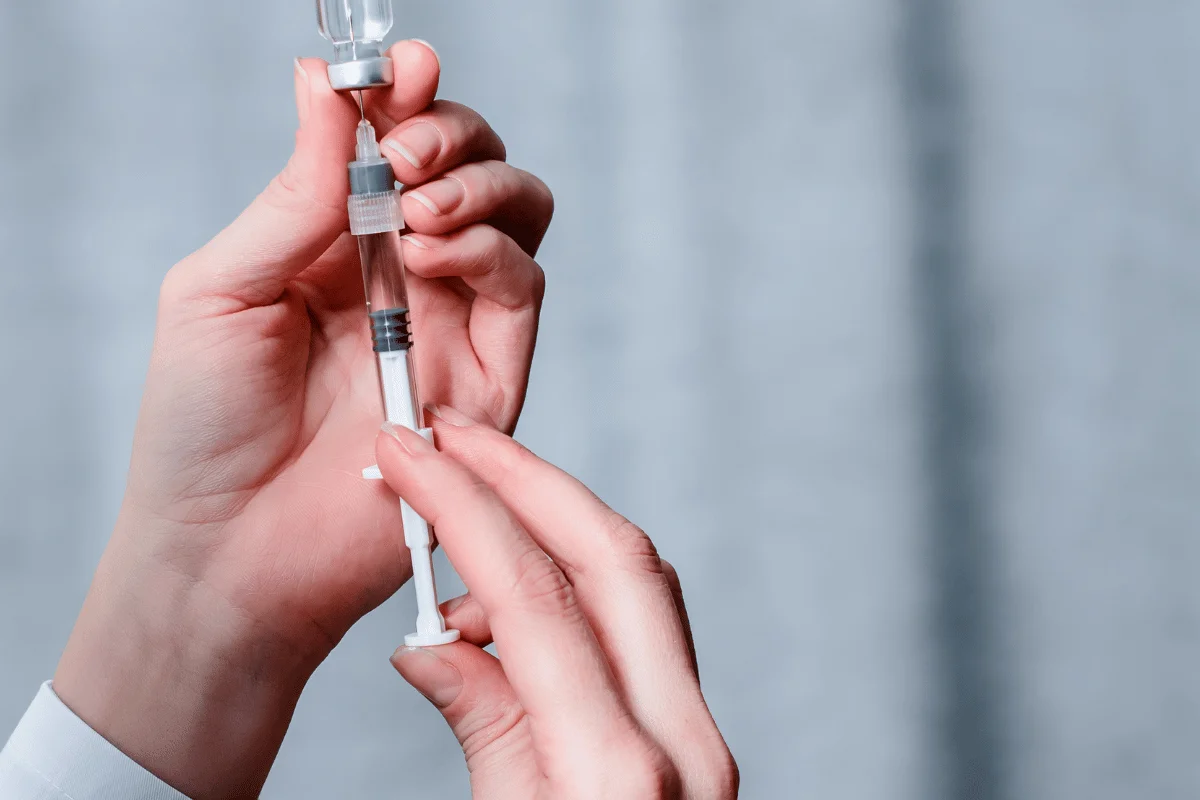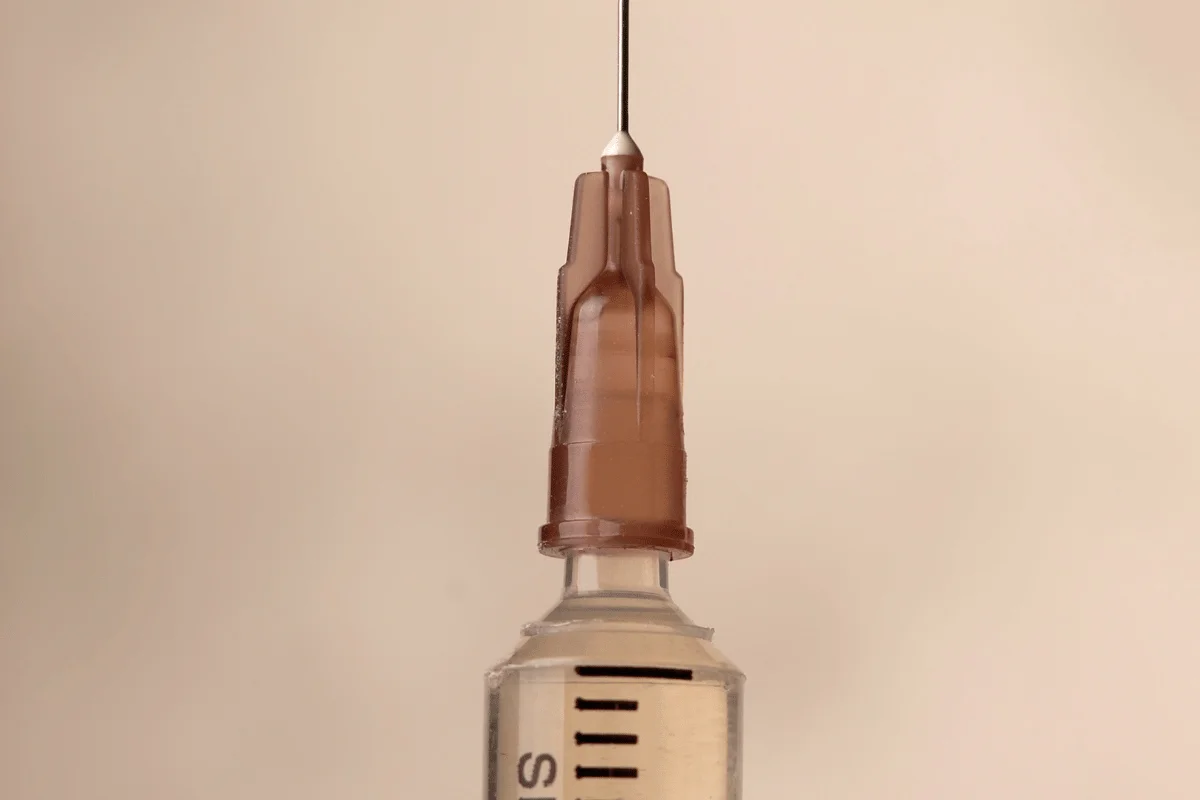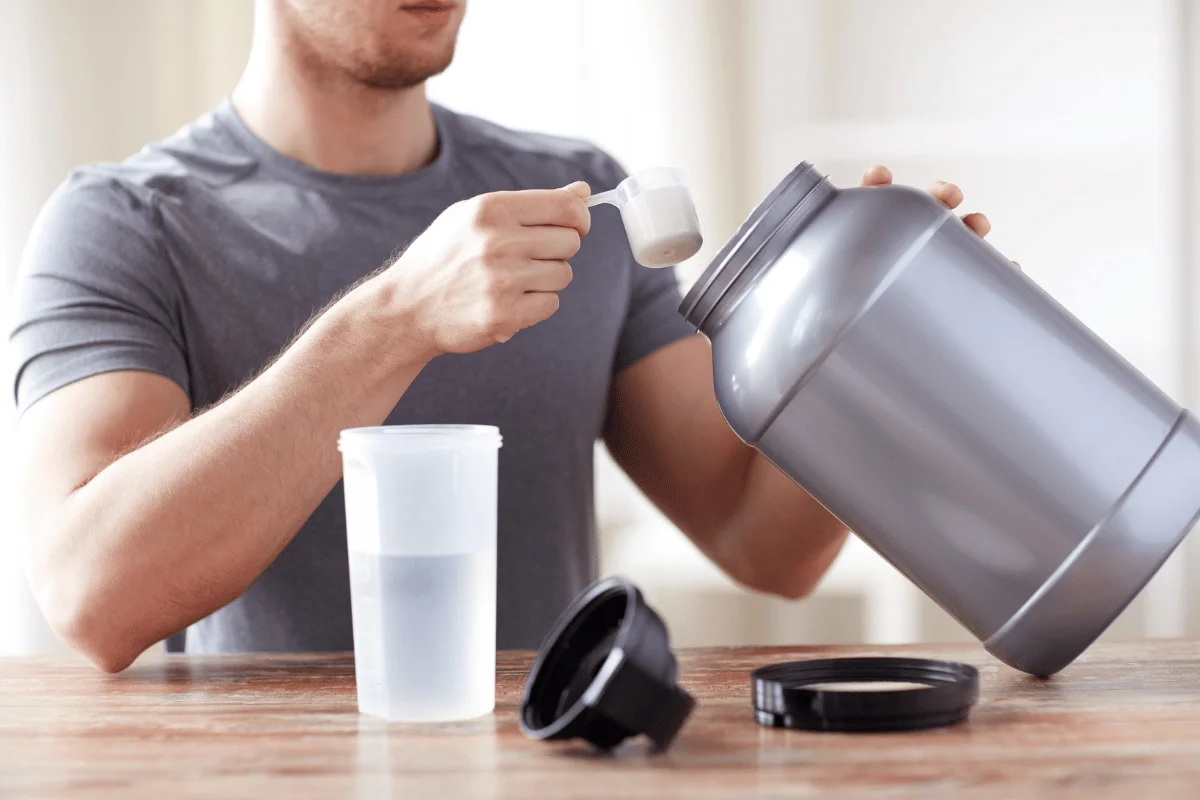[Disclaimer: The information presented on TB-500 is largely based on research conducted on thymosin β4, its parent compound. There are few direct studies on TB-500, and no human trials have conclusively proven its efficacy. Also, major sports organizations have banned its use in athletics. This article is for informational purposes only and should not be considered medical advice.]
TB-500 is becoming a popular peptide for health-conscious biohackers and bodybuilders. Many researchers have found benefits, such as faster wound and injury healing.
They also say it reduces inflammation and boosts the immune system. These effects make TB-500 appealing to older adults who want to stay healthy.
However, safety is a key concern when using TB-500 regularly, and its legal status is another factor to consider. Most importantly, you need guidance on proper TB-500 dosage for the best results.
This post will help you understand TB-500 better.
What is TB-500 (Thymosin Beta-4)?
To understand TB-500, we first need to discuss Thymosin Beta-4.
Thymosin Beta-4 (Tβ4) is a naturally occurring peptide in your body. Think of peptides as small proteins – this one comprises 43 amino acids, which are the building blocks of proteins. It’s produced by a gene in your body called TMSB4x.
Thymosin Beta-4 is found in almost every tissue in your body except for red blood cells.
When you get injured, your body’s natural healing response includes releasing Thymosin Beta-4.
But your body can only make so much of it, and not very quickly. This means your healing is limited by how fast your body can produce the compound.
So, what if we could give our bodies more of this healing peptide? That’s where TB-500 comes in:
- TB-500 is a lab-made version of Thymosin Beta-4.
- TB-500 isn’t the same as Thymosin Beta-4.
- It’s just the active part of the molecule.
This is what does all the good stuff – promoting healing, repairing wounds, and helping form new blood and muscle cells.
Another advantage of TB-500 is that it’s smaller and lighter than the full Thymosin Beta-4 molecule. This means it can move around your body more easily and reach injured areas faster and more effectively.

What is TB-500 Used For?
Both clinical and preclinical research indicate Thymosin β4-derived peptides have therapeutic potential for:
- Actin Binding: Helping regulate cell structure and movement.
- Dermal Wound Healing: Accelerating the repair of skin injuries.
- Angiogenesis: Promoting the formation of new blood vessels.
- Skin Repair: Enhancing overall skin health and regeneration.
Note: TB-500 should not be used outside valid research contexts.
Potential Benefits of TB-500
The healing applications of TB-500 are based on extensive research conducted on Thymosin Beta-4 over the past 40 years.
Interestingly, if you search for “TB-500” on the internet, you’ll find very little. However, a search for “Thymosin Beta-4” yields hundreds of studies.
This is because TB-500 is marketed as a research chemical, not for human consumption. These studies include cell culture experiments, animal studies, and a limited number of human clinical trials.
Putting all of these together, we found that TB-500’s potential goes far beyond injury healing and wound repair.
Let’s see some of these possibilities:
- Tissue Repair: Thymosin β4 may speed up healing by increasing the formation of new blood cells, blood vessels, and tissue fibers. It could also reduce scarring during the healing process.
- Heart Health: A 2016 study on mice showed that Thymosin β4 improved heart function after a heart attack. This suggests it might help protect the heart from damage.
- Antioxidant and Anti-inflammatory Effects: Research on mice with liver damage showed that TB-500 could reduce oxidative stress (cell damage from harmful molecules) and inflammation. It might help treat alcohol-related liver problems.
- Eye Disorder Treatment: In a clinical trial, patients with a specific type of eye wound reported significant improvement after using Thymosin β4 eye drops for 28 days.
- Potential Cancer Effects: Some studies have shown interesting results regarding TB-500 and cancer. In one study, mice with non-small cell lung cancer (NSCLC) lived longer when treated with TB-500.

TB-500 Dosage Guidelines
The right TB-500 dosage depends on your goals, body weight, and individual response to the peptide.
Here are some general guidelines to consider for different groups:
Recommended TB-500 Dosage for Beginners
Unlike some other peptides, TB-500 doesn’t have a “standardized dose” considered universally safe or recommended. This is mainly because there’s not much clinical research on it in humans—we only have a handful of trials to go on.
In these limited studies, researchers have used a wide range of doses.
Some have used Thymosin β4 as little as 0.5 micrograms per kilogram of body weight. On the high end, doses have increased to about 16,000 micrograms per kilogram (about 1260 milligrams per day) for 10-14 days.
No clinical trials have looked at using TB-500 for longer than two weeks.
Given this limited information, here’s a suggested starting point for beginners interested in TB-500:
- Daily Dose: 2 milligrams (mg)
- How to Take It: Inject under the skin (subcutaneously)
- How Often: Once daily
- For How Long: 15 days
To follow this protocol, you’d need three 10mg vials of TB-500. After the initial two-week period, some researchers continue with a lower ‘maintenance’ dose of 1mg daily if needed for full recovery.
Note: Published studies don’t back this protocol. It’s simply a starting point based on anecdotal reports and extrapolations from limited research.

TB-500 Dosage for Athletes and Performance Enhancement
Because research remains in early phases, no legitimate TB-500 dosing protocol exists for athletes.
Also, TB-500 is entirely banned in competitive sports by WADA (World Anti-Doping Agency), even showing up on equine doping control tests.
But hypothetically, if athletes were to experiment with TB-500, they might start with 2.0-5.0 mg weekly using a sterile injection technique.
Again, such non-research use of peptides breaches ethical norms and threatens sports integrity.
TB-500 Dosage for Bodybuilding
Although completely illegal and unethical for athletes, some bodybuilders admit to taking research peptides like TB-500 to try to improve workout recovery between cycles.
There is zero evidence that TB-500 directly builds muscle mass. However, its potential to expedite muscle tissue repair makes it tempting for bodybuilders to experiment with.
If bodybuilders were to use TB-500, they might inject 5.0-10.0 mg weekly. However, extended cycles could severely disturb natural hormone function. Do 3-month cycles, with one month off between cycles throughout the year.
Some bodybuilders reported starting with 4-6 weeks of higher “loading doses” before dropping to a lower maintenance amount, but loading phases are likely unnecessary (it can lead to overconsumption).
If you’re a beginner, you can start low-dose, and if you are experienced, you can take a moderate dose.
Let’s Be Clear: It is fully inappropriate and hazardous for bodybuilders to use TB-500 for anything other than controlled research purposes.

TB-500 Dosage for Healing and Injury Recovery
Human research on injury treatment with TB-500 is also limited. However, some guidance exists based on a few randomized trials studying related healing applications.
One trial published in the Annals of the New York Academy of Sciences explored using a 0.03% topical Thymosin β4 gel on 73 people to treat venous leg ulcers. These are slow-healing wounds on the legs caused by poor blood circulation.
The results were promising – it sped up wound healing, and 25% of the patients’ ulcers wholly healed within three months.
But what about dosage for general injury healing? Here’s where it gets a bit more complex. The most common approach is to base the dose on body weight.
The suggested dose for a 200-pound person (about 90.7 kg) is about 7.66 mg weekly for six weeks.
This comes from a calculation based on the standard formula for translating animal doses to human equivalent doses. Scientists use a “Km factor” to convert animal doses to human doses.
Here is the formula:
- Human dose (mg/kg) = Animal dose (mg/kg) x Animal Km/Human Km
MediVet (the manufacturer of TB-500) recommended a TB-500 dose for greyhounds (5 mg per week for a 32 kg dog).
So, the dose for
- Greyhounds: 0.15625mg/kg x 20/37 = 0.084459mg/kg
- A 90.7kg (200lb) human is 7.66mg per week (0.084459 x 90.7).
Important Note: This is still an approximation. It’s based on animal studies and mathematical conversions, not direct human trials.

How to Administer TB-500
TB-500 typically comes as a dry, freeze-dried powder that needs to be mixed with a liquid to create an injectable solution. Bacteriostatic water is commonly used to reconstitute the powder.
To give an injection, first choose an injection site, either under the skin (subcutaneous) or into the muscle (intramuscular). Then, clean the skin with an alcohol pad and use an insulin syringe to inject the precise TB-500 dose.
After injecting:
- Apply pressure to the site to prevent any liquid from leaking back out.
- Rotate the injection location regularly to minimize skin irritation.
- You can massage the area after injecting to help absorption.
The TB-500 shot can be given close to an injured or problematic area, but it doesn’t need to be at that exact spot. Once injected, TB-500 distributes throughout bodily tissues.

Factors that Influence TB-500 Dosage
Because research with TB-500 is in its infancy, no definitive guidance on personal dosing adjustments exists.
However, some factors may potentially impact your protocol:
- Weight: Heavier subjects may need slightly larger doses based on their metabolic rate.
- Injury Severity: More acute injuries would theoretically need higher initial doses for quicker recovery.
- Age: Due to declining Tβ4 levels over time, TB-500 dosage requirements likely increase with age.
Without controlled human trials, though, these relationships remain hypothetical. Qualified medical guidance is a must.

Common Side Effects of TB-500 and How to Manage Them
Human trials remain lacking despite animal studies suggesting high bioavailability for months with no overt toxicity. Possible long-term side effects are relatively unknown.
However, depending on all the research we have mentioned till now, short-term side effects can be:
- Mild headache
- Temporary lethargy
- Nausea
- Flu-like fatigue
- Injection site reaction
These side effects should disappear after a few doses as the body gets used to TB-500. If you experience severe or persistent side effects, discontinue use and consult a healthcare professional.

Is TB-500 Safe?
Current research suggests that Thymosin β4 has a reasonable safety profile. So, pharmaceutical-grade TB 500 may also be safe.
As long as proper precautions are followed and you source pharmaceutical-grade products, serious problems seem very unlikely.
However, we can’t automatically conclude safety for every individual.
Just because early findings show minimal side effects doesn’t mean they can’t occur for some people. What works for one person may not work for another.
Also, since TB-500 lacks FDA oversight and ethical controls, significant risks likely exist when people obtain it online for personal use without medical guidance.

Frequently Asked Questions (FAQs)
Let’s answer some common questions about properly handling and using TB-500:
How Should TB-500 Be Stored?
Keep unconstituted TB-500 powder refrigerated or frozen at 36°F-46°F until ready to reconstitute. Once mixed with bacteriostatic water, refrigerate the reconstituted solution and use it within one week.
Are there Any Drug Interactions to Be Aware of with TB-500?
No TB-500 drug interactions are published. Use caution and consult your medical practitioner when combining with medications or other exogenous peptides.
Discontinue use if any side effects develop.
Can Women Use TB-500?
Yes, women can use TB-500. There’s no evidence suggesting gender-specific differences in its effects or safety profile.
However, women who are pregnant, breastfeeding, or trying to conceive should avoid using TB-500 due to a lack of safety data.
How Much Does TB-500 Typically Cost?
Prices for single 10mg doses of TB-500 are around $100-$150 (for research use only; it’s not sold to patients).
However, despite claims from online peptide product listings, actual purity levels are not guaranteed.
How Long Should You Take TB-500?
More guidance is needed on how long someone should take TB-500 and whether to cycle on and off.
Based on the animal research so far, taking it steadily for over 12 weeks straight could disrupt natural inflammatory and healing processes in humans.
Conclusion
While TB-500 shows promise for healing and recovery, formal protocols for safe dosing ranges remain lacking, necessitating further ethical research.
Always prioritize safety and consult with healthcare professionals before experimenting with any peptide therapy.
If you want to learn more about peptides and their potential for health optimization, we invite you to join the All About Peptides community. Our newsletter provides valuable insights on using peptides safely and effectively for various health goals, from injury recovery to peak performance.
We’re excited to share our knowledge and experiences with you. Subscribe now and start your journey to better health!








